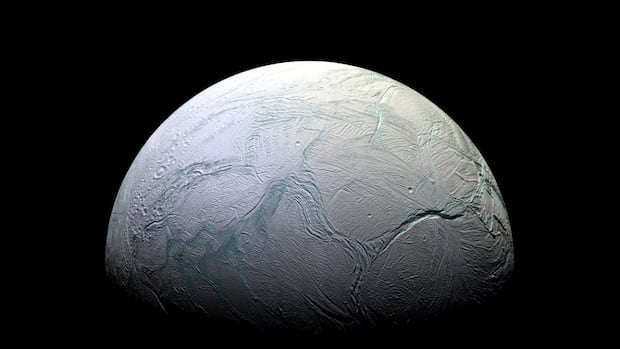The Asteroid Belt's Slow Vanishing Act: A Cosmic Look at Earth's Past and Future
Located between Mars and Jupiter, the asteroid belt is a vast collection of rocky debris that is gradually fading away. A new study by planetary scientist Julio A. Fernández from Uruguay's Universidad de la República, reveals the rate at which the asteroid belt is losing mass and its implications for Earth's history of cosmic collisions.
A Gradual Disappearance
Fernández's research indicates that the asteroid belt's most collision-prone region loses approximately 8.8 × 10⁻⁵ of its own weight per million years. This loss, primarily from collisions between billions of small rocks, might seem negligible but accumulates significantly over billions of years. Approximately 20 percent of this lost mass forms large debris, while the remaining 80 percent breaks down into minuscule dust.
This dust largely accumulates in the zodiacal cloud, a hazy band in the inner solar system that scatters sunlight, causing the faint zodiacal light visible at dawn or dusk. The Poynting–Robertson drag, a subtle effect of light pressure, nudges these particles towards the Sun. Ultimately, they are trapped by Earth's atmosphere as micrometeorites, adding thousands of tons of extraterrestrial material to our planet annually.
The Gravitational Influence of Giant Planets
The movements of asteroids within the belt are far from random. Their trajectories are heavily influenced by gravitational waves caused by Jupiter, Saturn, and Mars. These "riptides" can destabilize asteroid paths, either directing them towards Earth or flinging them outwards.
Asteroids entering these unstable regions are often ejected from the solar system. Some find themselves in Earth-crossing orbits and eventually collide with our planet as meteorites. Others collide within the belt itself, fragmenting into smaller pieces and continuing the cycle of grinding and scattering. This process creates both the constant rain of cosmic dust and the spectacular meteor showers observed from Earth.
Reconstructing the Asteroid Belt's Past
To estimate the asteroid belt's mass loss rate, Fernández compared current rates with simulations of past impact rates based on lunar craters and ancient rocks on Earth. His findings suggest that the asteroid belt was approximately 50 percent more massive around 3 to 3.5 billion years ago, and its mass loss rate was twice as fast. This indicates that the inner planets, including Earth, were subjected to more frequent impacts during that period.
Even minor adjustments to the estimated depletion rate significantly alter our understanding of the early solar system. For example, if today's loss rate were three times lower, the asteroid belt could have been exponentially larger, indicating a much denser and more collisional early solar system. This scenario aligns with evidence from the Late Heavy Bombardment, a period of intense cratering observed on the Moon and Mars.
The Asteroid Belt's Role in Shaping Life
Asteroid impacts have not only shaped planetary surfaces but also potentially influenced the emergence of life. These impacts might have delivered essential volatiles and organic compounds to early Earth, providing the building blocks for biological processes. Conversely, impacts have also been devastating, most notably the event 66 million years ago that led to the extinction of the dinosaurs.
As the asteroid belt diminishes, cataclysmic impacts become less frequent. Today, most space debris impacting Earth consists of inert dust or small meteorites. Nevertheless, the ongoing depletion of the asteroid belt serves as a continuous reminder of our planet's vulnerability to cosmic events.
The Science of Meteorites and Space Dust
According to Fernández, around 80 percent of the asteroid belt's lost material exists as microscopic dust, with the remaining portion being larger fragments that burn up in the atmosphere. Meteorites, fragments that survive atmospheric entry, are invaluable samples that allow scientists to study the chemistry of the early solar system.
By tracing meteorites back to their parent bodies within the asteroid belt, researchers can identify active and unstable regions. This provides insights into the evolution of the solar system and helps in assessing potential impact hazards. Though seemingly uneventful from afar, the asteroid belt continues to communicate through the cosmic dust and rocks it releases.
A Delicate Balance
The asteroid belt, while seemingly calm, is a dynamic and sensitive system held in equilibrium by two opposing forces: collisions, which break asteroids into dust, and gravitational forces, which eject them into space. Fernández believes that this balance is currently stable and will persist for billions of years unless disrupted by large-scale chaotic events.
Even slight variations in the orbits of Saturn and Jupiter could upset this equilibrium. Over geological timescales, these small changes could accumulate and increase the number of fragments heading toward the inner planets, resulting in a new era of crater formation and cosmic impacts.
Practical Implications of the Research
Understanding how the asteroid belt is diminishing allows scientists to reconstruct the history of the solar system and predict future impact events. It also enables the development of more accurate models of planetary system formation throughout the galaxy.
For our planet, this research offers a glimpse into the past and improves our understanding of space debris risk. By analyzing the relationship between dust formation, resonance phenomena, and meteorite origins, Fernández's work provides scientists with tools to estimate the frequency of new material impacting Earth from the asteroid belt.
The Cosmic Hourglass
The asteroid belt functions as a cosmic hourglass that ticks at an incredibly slow pace. Both symbolically and literally, its particles embody the age and history of the solar system, from the ancient planetesimals that never coalesced into a planet to the meteorites that still occasionally land on our planet.
Research findings are available online in the journal arXiv.
 Visit the website
Visit the website

